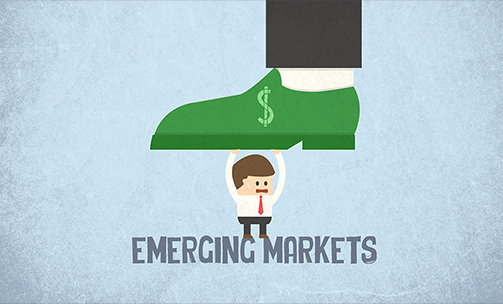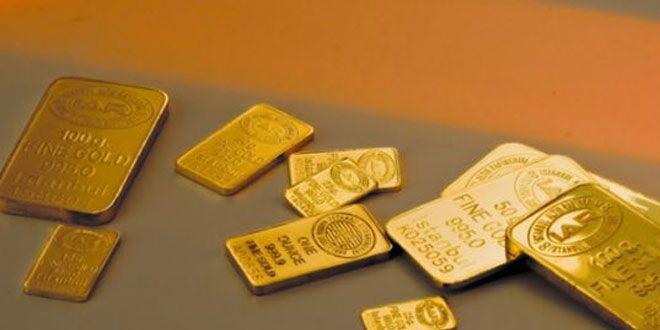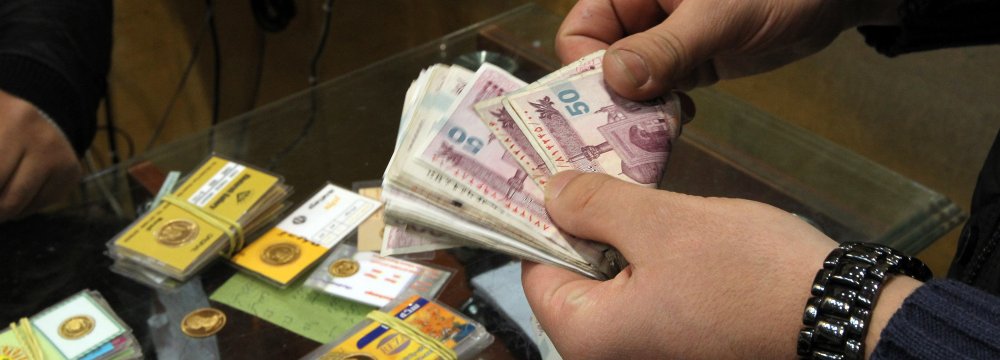| In recent weeks, global financial markets have been increasingly spooked by an intensifying crisis in emerging market currencies including those of Turkey and Argentina. Add to this the ongoing currency crisis in Venezuela and the currency problems of Iran. While all of these countries have economy specific reasons that explain at least some of their currency weakness, there are some common themes such as a stronger US dollar, high domestic inflation rates, economic mismanagement, reliance on foreign borrowing, and in some cases economic sanctions imposed by the US.
As one currency plummets, this intensifies emerging market risk across the entire asset class, and it’s not unreasonable at this time to at least speculate whether the contagion could spread. The Brazilian Real and South African Rand have come under pressure and in Asia, the Indonesian Rupiah and Indian Rupee are also now weakening against the US Dollar. It is against this backdrop that physical gold is being increasingly mentioned within these emerging economies, with gold coming to the fore as it always does in times of crisis. It is for this reason that its interesting to take a look at a number of these currencies and examine how gold is playing the role of safe haven for these countries’ citizens as well as creating a challenge for these nations’ leaders and central banks. |
|
Buying up Gold as the Turkish Lira PlungesWith ongoing currency and external debt problems, Turkey, with a population of 90 million, has played a central role in the current currency crisis and remains a catalyst for potential risk contagion across other troubled emerging market currencies. Turkey’s currency woes come against a backdrop of a stronger US dollar, domestic inflation of 15%, increasing default risk, market skepticism about the independence of Turkey’s monetary policy, and a series of US sanctions against the Turkey economy. Although the Turkish Lira was already weakening during the early part of the year (falling 6.4% against the US Dollar from January to April), things took a turn for the worse in May with the Lira falling by a further 9% against the dollar during that one month. Another 6% drop in the Lira followed during July. But it was in August that the Turkish currency crisis really accelerated, with the Lira depreciating 28% against the US dollar in an environment of US sanctions and rating agency downgrades of Turkey’s debt. During the same time frame, the gold price in Turkish Lira rose by approximately 60%, from just under TRY 5000 per troy ounce at the beginning of January, to TRY 7860 per troy ounce at the end of August. This rising local gold price spurred an increase in physical gold demand in the Turkish Gold Market, as reported by Bloomberg at the end of May with “a jump in demand for gold coins” and Turks “buying up gold as the lira plunges in the latest currency crisis” “Gold priced in lira is more expensive than ever, that’s not deterring buyers, who are looking for a safe haven“ “‘Turkish people have an interesting behavior – they buy gold when the prices are rising, they think it’s gonna rise more,’” said Gokhan Karakan who runs a gold exchange office in the heart of Istanbul’s Grand Bazaar. “People think there is a trend here and choose to buy gold until uncertainty is out of the way.” Perversely, in August while the Turkey Lira was in free fall, Turkey’s president Erdogan (who is against raising Turkish interest rates) made a nationalistic call for the Turkey public to sell both gold and US dollars and buy Turkish Lira. In a speech to a crowd in the Turkish city of Bayburt on 10 August, Erdogan advised: “If there is anyone who has dollars or gold under their pillows, they should go exchange it for lira at our banks. This is a national, domestic battle.” Although not surprisingly the presidential bid to support the Turkish Lira by selling gold did not work (as the local gold price continued to rise), the lesson from Erdogan’s call is clear. Gold is a safe haven and retains its value in times of crisis. Unfortunately Erdogan’s motivations were political, with an irresponsible call to sell one of the only assets that can provide a shelter from the eroding value of the Lira. |
|
Iran – Investing in Safety as the Crisis IntensifiesIran’s currency, the Rial, has fallen heavily in value against the US dollar this year, losing approximately 60%, from an unofficial rate of about 43,000 Rial at the beginning of January to 110,000 to the US dollar at the end of August. The currency crisis even led to the head of the Iranian central bank, Valiollah Seif, being fired by the Iranian president during July. This slow motion but steady collapse of the Rial had been ongoing for sometime due to a weak economy, inflation of more than 19%, and economic uncertainty brought on by the fear of US sanctions (such as in April), but accelerated in May when the US administration pulled out of a multilateral nuclear deal on Iran (JCPOA), and subsequently announced two new sets of sanctions against Iran. The first set of these sanctions, which came into effect on 7 August, included restrictions on Iran’s trade in gold and other precious metals and on Iran’s trade in US dollars. The run up to the first set of sanctions also saw heightened gold accumulation in Iran. The second set of sanctions, which come into effect on 4 November, focus on the Iranian energy and financial sectors, including doing business with the Iranian central bank. |
Over the year-to-date as the Rial slid amidst fear of sanctions and then the subsequent reality of those sanctions, the Iranian public (Iran population 82 million) rushed to the safe haven of physical gold, hoarding gold coins and gold bars and pushing demand for physical gold to a 4 year high. As the World Gold Council noted in August when discussing second quarter Iranian gold demand:
“Faced with renewed economic sanctions and a collapsing currency, which caused a huge rise in the local price [of gold], demand for gold jewellery slumped. Instead demand was channelled into gold investment products (which, unlike gold jewellery, are VAT-exempt), pushing demand for bars and coins to a four-year high.
This was reiterated on the ground in Iran’s Gold Market, as Bloomberg noted at the beginning of August:
“Demand for physical gold is very high and has been as the currency’s been weakening,” said Massoud Gholampour, an analyst at Novin Investment Bank in Tehran. “People want to invest in something that’s safe if they think that a crisis may be on the way.”
Some of this physical gold demand was met by the Iranian central bank. Triggered by the currency collapse and a rising local gold price, the central bank decided to introduced a gold coin presales scheme designed to dampen down the local gold price, offering 7.6 million gold coins to applicants, over time horizons from 1 month to 6 month maturities. For example the delivery phase of the 6 month maturity presales scheme is active until November.
The Rial’s collapse and eroding value also brought gold to the fore for larger payment transactions in Iran, such as real estate rentals, where for example, one landlord was “asking prospective tenants to pay two gold coins to rent a 95 square metre apartment for one month.”
“I know that many may not be able to afford it….but when I see that the currency I may get from my tenants would have less value compared to the previous month, then that leaves me with no choice. If I continue to rent out my apartment in return for rials, then I would face financial loss.”
Maduro play the Gold Card as Hyperinflation Reigns
In the hyperinflationary economy of Venezuela, where inflation is now running at nearly 65,000% and is predicted by the IMF to reach 1 million percent before the end of the year, the Venezuelan currency in its various forms continues to hit the headlines.
On 20 August, Venezuela began the replacement of its existing fiat currency, the Bolivar fuerte (strong bolivar), with a new Bolivar Soberano (sovereign Bolivar) at a rate of 1 Bolivar soberano for every 100,000 Bolivar fuerte, effectively knocked five zeros off the fiat currency. This exercise is ostensibly meant to tackle hyperinflation but will, like all previous Venezuelan currency experiments, most likely not be effective and will probably exacerbate hyperinflation.
At the same time, the new Bolivar soberano was decreed to be linked to a murky and opaque state issued cryptocurrency called the Petro, at a rate of 3600 Bolivar soberanos to 1 Petro. This Petro is claimed to be backed by Venezuelan oil but there is scepticism that the Petro doesn’t really exist or at least doesn’t exist as a functioning currency.
All of the above sets the new official rate at 1 USD = 60 Bolivar soberano (or 1 USD = 6 million Boliar fuerte), and effectively devalues the Venezuelan currency by 95.8% since the previous official rate was 1 USD > 248,000 Bolivar fuente. The Bolivar fuente in its short life (launched in January 2008) itself had experienced many official devaluations against the US dollar, all the while trading on the black market at far lower values than the official rate. Even the new Bolivar soberano less than a few weeks old is already trading at 87 to the USD, far weaker than the official rate (see https://dolartoday.com).
| It was into this tumultuous economic environment that Venezuelan president Maduro last week announced a national gold savings plan for workers, retirees and savings banks (Venezuela population 32 million) that will be launched on 11 September. Although the gold savings plan looked half-baked and flawed (as do most of Venezuela’s recent forays in economic interventionism), the fact of the matter is that yet again, physical gold makes an appearance in the midst of a currency crisis. | Maduro explains his ‘Lingotico’ Gold Savings Plan at a party conference 26 August: Source: EL PAÍS |
| Maduro’s new plan, known as ‘lingotico’, aims to issue gold backed certificates, backed by small gold bars of 1.5 gram and 2.5 gram weights. The gold will be available for ‘purchase’ by Venezuelans at 3,780 bolivars for the 1.5 gram gold bars and the 2.5 gram gold bars will sell for 6,300 bolivars. However, according to Bloomberg, buyers will receive gold certificates, not the actual gold bars.Maduro said that the gold for this saving program is sourced from the eastern Guayana region of Venezuela (not to be confused with the neighbouring country of Guyana), which he said the BCV, Venezuela’s central bank had sourced from local gold mines. Interestingly, the gold for this scheme is not being sourced from Venezuela’s central bank gold reserves, as they have either been most likely already sold off are under claim in various gold loans / gold swaps.
In the two short videos below (in Spanish), Maduro, with small gold bars in hand in sealed packaging with the BCV central bank logo, outlines how the scheme will allow Venezuelans to save in gold, and to protect their savings from inflation. The first video was filmed at a Maduro party conference on Sunday 26th August. |
Maduro launches the Gold Savings Plan at Casa de la Moneda in Aragua, Venezuela: Source Venezolana de Televisión (VTV) |
The second video, the official launch of the gold savings plan, was filmed at the Casa de la Moneda in Aragua, Venezuela (a BCV banknote and coin facility) and again shows Maduro with a gold bar in hand and ironically is set against a backdrop of huge quantities of Bolivar bank notes, and in the background somewhat bizarrely BCV employees paging through huge quantities of printed banknotes.
The Contagion Spreads
Staying in South America, the emerging market currency crisis has now rippled through to Argentina and to a lessor extent Brazil, with the Argentine Peso plummeting in double digits last week against the US dollar on news that the Argentine government had requested an early activation of an IMF loan, fanning market fears that the Argentine economy will have imminent problems repaying foreign denominated debt.
The Argentine peso has lost more than 50% against the US dollar during 2018 and is now 2018’s worst performing currency. The peso’s plummet during the week forced the Central Bank of Argentina (BCRA) to hike official interest rates to 60% to try to stop the peso selloff, and Argentina,where inflation is running at over 25% per annum, now has the embarrassing distinction of having the highest interest rates in the world.
Elsewhere in South America, the Brazilian Real and Chilean Peso have also begun declining notably in value against the US Dollar, with the Real down more than 20% against the US dollar year-to-date. Further afield, other emerging market currencies are now experiencing possible contagion effects, with the Indonesian Rupee now at its lowest level against the US dollar since the Asian crisis of 1998, and the Indian Rupee now below 71 to the US dollar for the first time ever. Expect to see gold linked to currency stories in these economies as the emerging market crisis continues to brew.
Physical gold takes centre-stage in times of crisis precisely because it has tangible value, is not issued by any central bank, monetary authority or government, cannot be debased and has no counterparty or default risk. The fact that sophisticated physical gold markets exist in most if not all of the economies currently stricken by currency weakness also allows gold, with its deep liquidity, to be quickly harnessed.
Full story here Are you the author? Previous post See more for Next postTags: Argentina,Brazil,central-banks,gold bars,gold coins,gold price,hyperinflation,India,inflation,Iran,newsletter,South Africa,Turkey,Uncategorized,US dollar





























